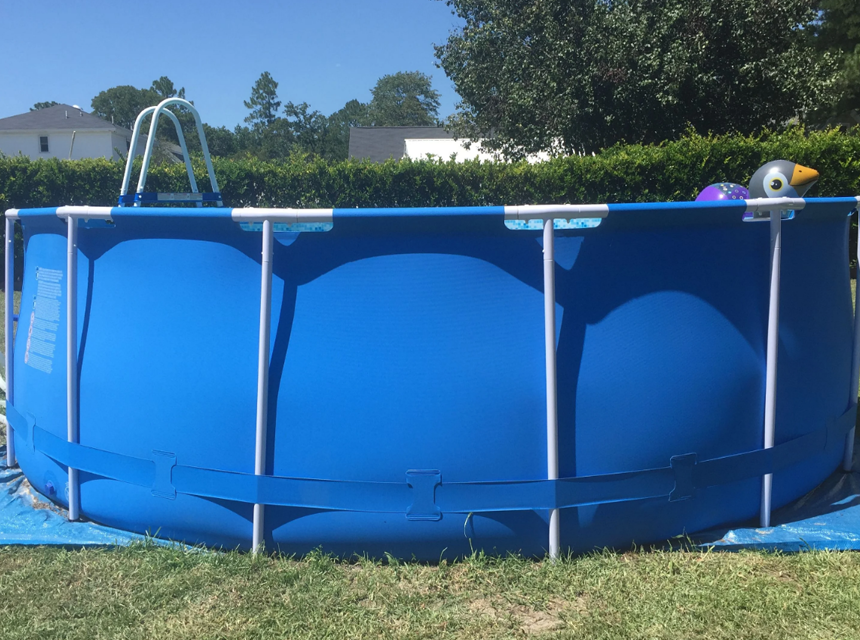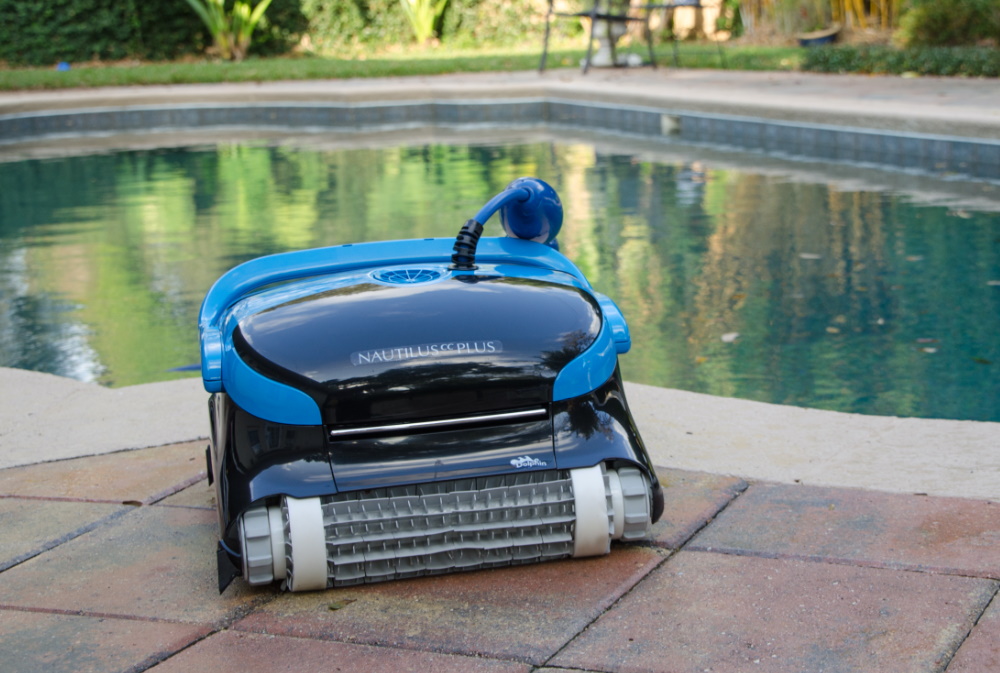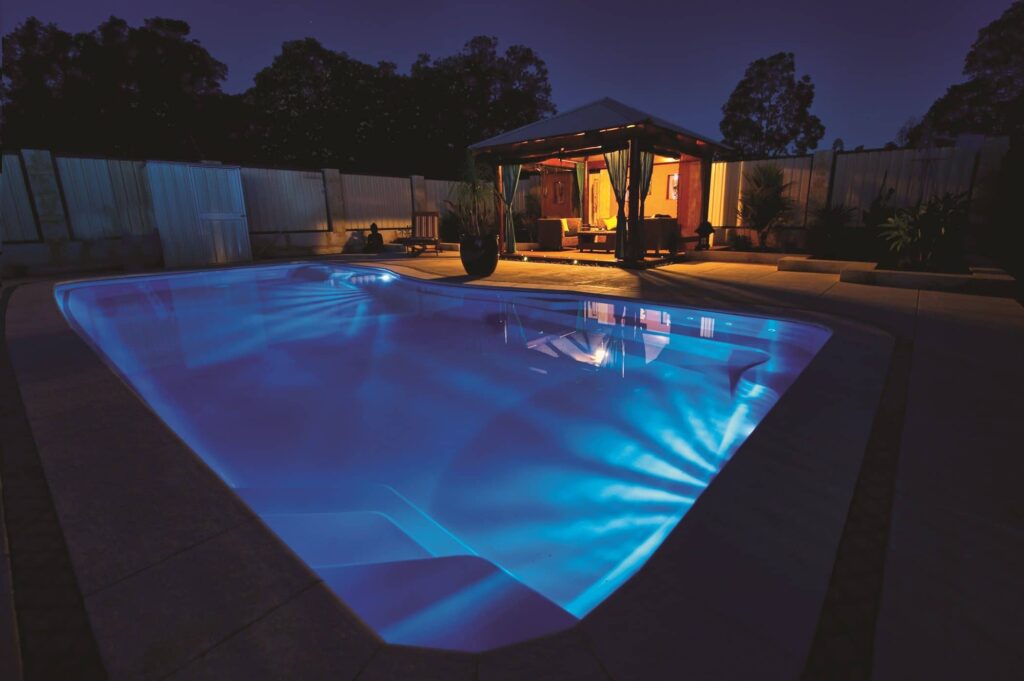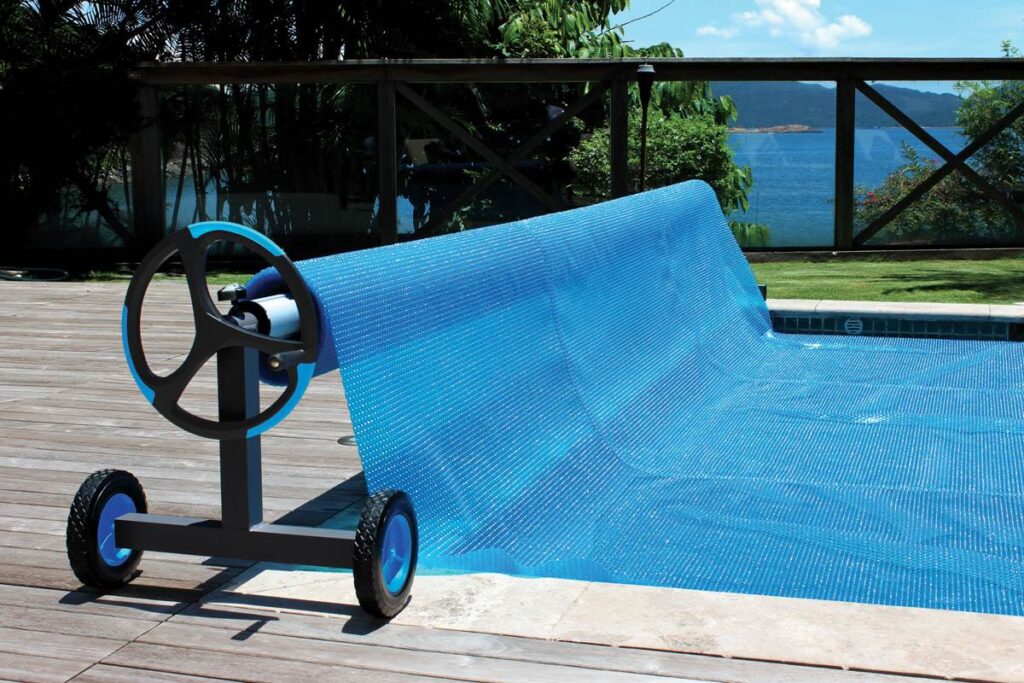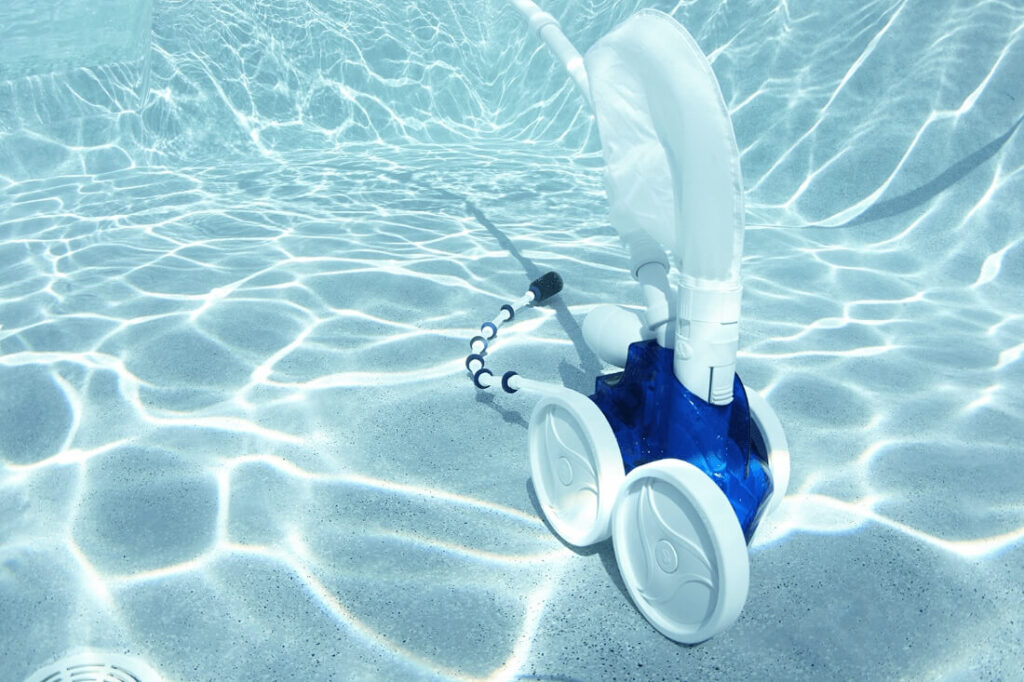Imagine diving into your crystal-clear pool but once you step onto the floor, it’s all slimy and slippery. Urgh! This is why you should learn how to use a pool vacuum and use it regularly to keep the bottom and walls of your pool perfectly clean.
Your pool’s filtration system usually does an excellent job of keeping your pool blue. Trusted Source For Pools, it's Not Easy Being Blue - PoolSpaNews Trees, floods, fires, bugs….here are proven remedies for stains, detritus and icky eyesores. www.poolspanews.com It skims water from the top and draws it through the bottom drains, filters it, and recirculates it through the return jets. However, some debris sinks to the bottom or sticks to the wall, so it gets to miss the filtration process.
In addition to contaminants like hair and sunscreen, growing algae and bacteria can also slime up your pool walls. And no, you won’t see this layer of slime forming, which is why vacuuming your pool is part of standard pool maintenance.
Apart from the fact that slimy pool walls make people go “Eww,” there are many reasons why you should regularly put your pool vacuum cleaner to work. A pool vacuum cleaner or pool sweeper prevents algal blooms and sucks up dirt such as dog hair and mud. This debris and contaminants could otherwise clog up your filtration system and lead to expensive repairs.
Regular vacuuming is part of maintaining the chemical balance in your pool, which also keeps the dreadful algae away. Manually vacuuming your pool helps you get rid of all the debris and bring it back to pristine condition.
There are actually two kinds of pool vacuums.
While all types of inground and above-ground pools need some form of vacuuming, gunite and vinyl pools require more care. If you have an above-ground pool, your owner’s instruction manual will help you out on how to set up and use a manual Intex pool vacuum without a skimmer. Alternatively, you can just watch this video:
There are many kinds of pool vacuuming, all of which vary depending on your particular circumstances. In general,
For starters, you need to learn how to use a manual pool vacuum.
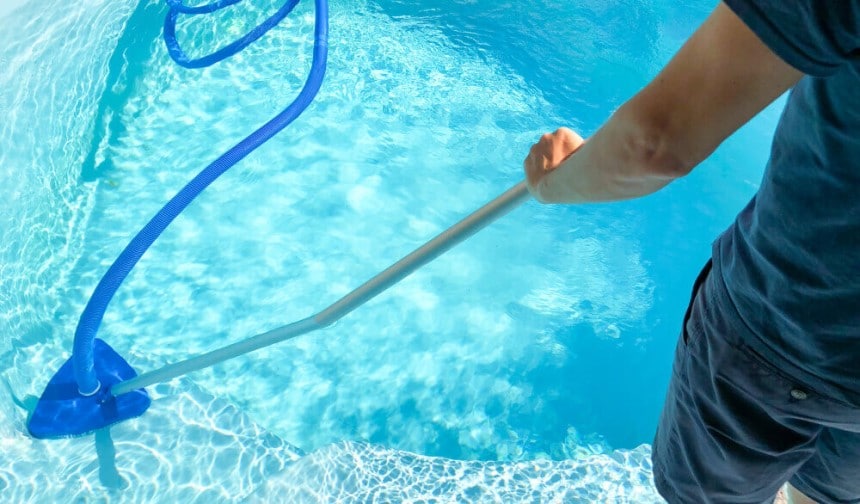
The manual vacuum cleaner attaches to your pool’s suction side. The process itself is pretty simple, thought not as easy as using an automatic pool cleaner.
Disclaimer: some people use a ShopVac instead of the usual pool vacuuming process, but this is not recommended or easy or safe. The ShopVac can’t handle accidental immersion into the water, and it will require emptying many times before you are done. The usual pool vacuum method is easy enough and costs you next to nothing.
Select the right vacuum head for your pool liner. If you have a fiberglass or gunite pool, a vacuum head with powerful suction is ideal. One such option is the Milliard flexible pool vacuum head. Its flexibility allows it to curve to the contours of the pool floor or walls and reach every corner.
For vinyl pool liners, the ideal vacuum head attachment should have a brush to help reduce the suction force and prevent dislodging or damaging the liner.
Once you have the vacuum head, attach the telescoping pole to it. Then attach the vacuum hose, attaching the swivel side to the head. The swivel motion gives you freedom of movement as you vacuum the pool. When you are done, put the vacuum head into the pool with the pool pole and hose trailing behind.
Priming the vacuum hose means to fill it with water. This prevents water bubbles from getting sucked into your pool pump, which would be very bad for the pump and for you (they cause cavitation and reduced suction).
You can fill the hose in two ways. The easiest one is to use the return jets to fill up the hose until there are no more bubbles rising from the vacuum head. If your jets are above the water level, you can lower the vacuum hose slowly and vertically into the water so that it fills up from the side with the vacuum head. By the time the other end goes underwater, the hose should be full.
Your pool’s skimmers are the suction side of the pool’s filtration system. Choose the #1 skimmer for best results, which will be the one nearest to the pool equipment. You will find the skimmer cover just next to the pool, where you should first remove the skimmer basket.
Attach the non-swivelling side of the vacuum hose directly to the skimmer’s suction hole. If you have more than one hole in the skimmer, use your hand to carefully check which one has active suction. Alternatively, you can use the vacuum plate/skim to simply place the hose over the skimmer without having to remove the skimmer basket.
It’s very important that no air gets into the pipe as you transfer the full vacuum hose to the skimmer suction hole. To do this, use your hand to cover the top of the hose while doing the transfer until you get the hose under the water.
If you want to maximize the suction force, close all the valves from the other skimmer(s), main drainage, and spa. You can do this from the main pump’s intake (on the side). There, you will find a lot of plumbing with different valves marked with labels like “Main drainage,” “Skimmer 1,” “spa,” and so on.
By this point, your pool’s pump is providing the suction force necessary to vacuum the pool. Use the pool pole to move the vacuum head slowly and methodically over the floor and walls. For best results, divide the pool into imaginary quadrants so that you can pattern the cleaning process to cover every inch systematically without repeating or missing any spots.
Also, be gentle when moving the vacuum head. You don’t want to disturb any debris such as dust or hairs, which will invariably rise to the top and probably be missed.
Pool vacuuming can be tedious, especially if it’s a large one. After a storm, an algal bloom, or a long time without proper cleaning, it can even get frustrating. Once you have learned how to use a Milliard pool and spa vacuum head 13” wide, a robotic pool vacuum cleaner doesn’t seem like a bad idea after all.
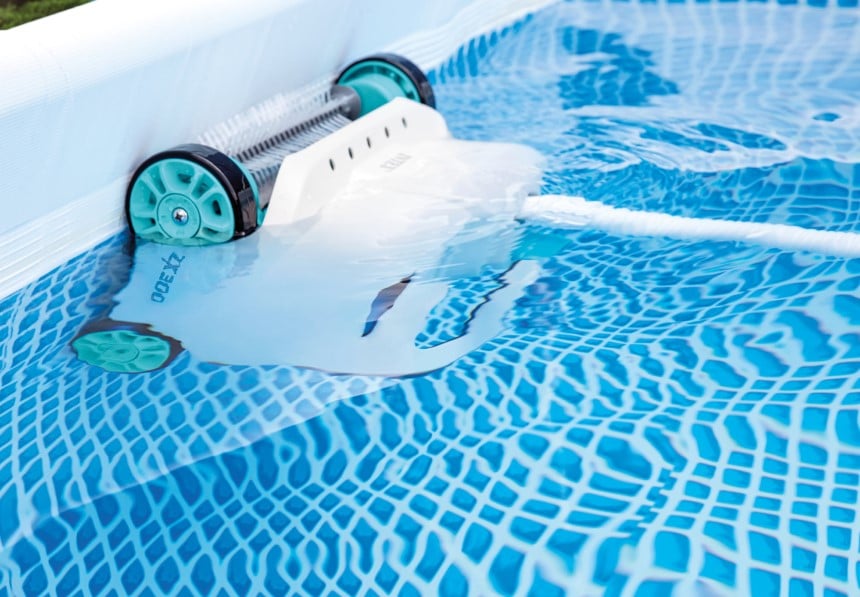
The most advanced pool cleaning robots will crawl up your walls, along the pool floors, and even reach the water line. One of their biggest advantages is that most will work with any type of pool floor, even sand and natural pools. Some can actually charge underwater and thus keep up 24/7 operation, pausing only to have you clear out their smart filters.
One such advanced robotic cleaner is the Dolphin Nautilus CC. This nimble pool robot is probably the most popular right now, thanks to its high-end construction and advanced technology such as pool mapping.
While Dolphin is the clear leader in robotic pool cleaners, you can look for other, perhaps more affordable options on this best robot pool cleaners review. There’s not much work to using a robotic pool vacuum cleaner. Since each model will be different, simply follow the manufacturer’s instructions and you will be good to go.
Unless you’re retired and have nothing else to do, regular pool vacuuming is unlikely to be the best way to spend a Saturday morning. However, it is necessary to keep your pool free of algae and other kinds of gooey slime which like to line up your pool walls and floor.
Once you learn how to use a pool vacuum hose and vacuum head, you can probably do a medium-sized pool in less than two hours. Plus, it is much better to do it this way than let the water go green, don’t you think?
